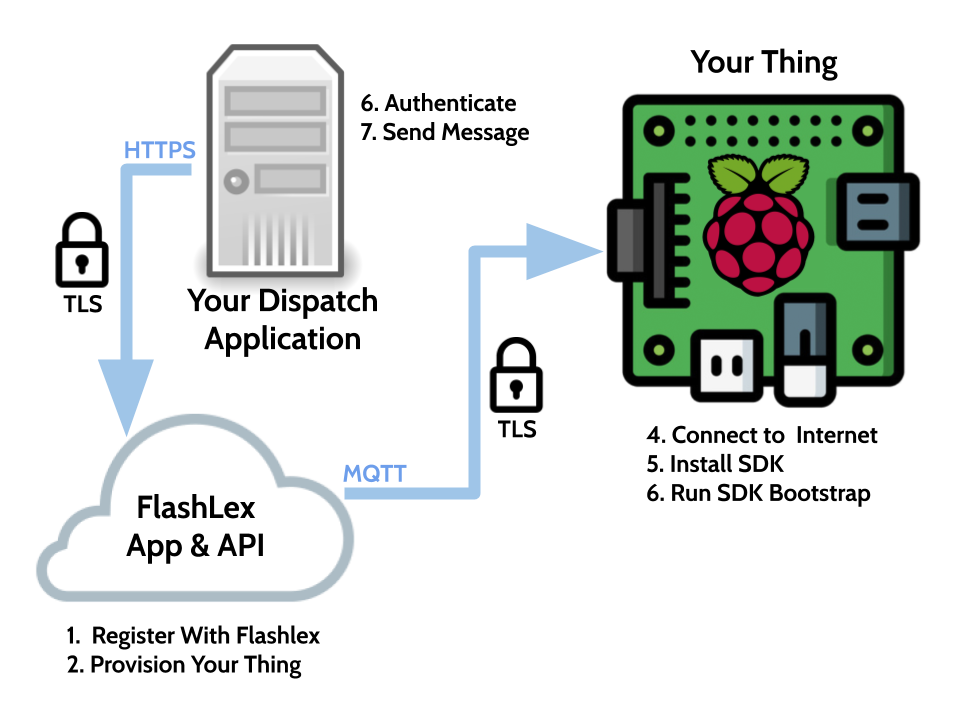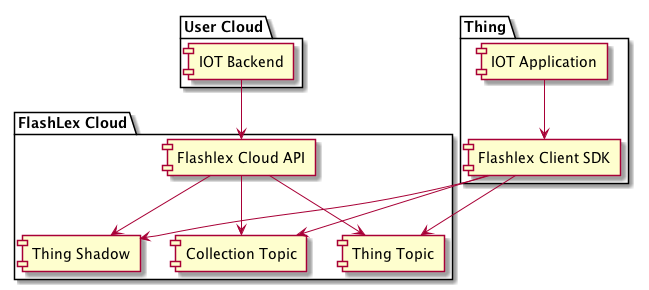FlashLex 1.4 Docs
TL;DR?
Not interested in the details? Then goto our Getting Started Guide to get going quickly.
What is FlashLex?
FlashLex is an internet gateway for the internet of things. It simplifies accessing your IOT device by providing a simple HTTP REST API to dispatch messages.

-
FlashLex App & API - The SaaS Internet Gateway for all your things. FlashLex is responsible for managing your things, storing messages for retrieval and coordination your services.
-
The Thing - A thing is a small computer that you would like to either send messages to or collect messages from on the internet.
-
Dispatch Application - Sends or collects messages across all your things. It orchestrates communication between multiple things.
It provides a simple way to access your IOT enabled device using our REST API and installed distribution SDK bundles. Using our platform makes your device capable of recieving and publishing IOT messages in minutes. The FlashLex platform provides a simple consistent way for your backed to route published messages made via REST API calls using a secure access token to a topic subscribed by your thing, gives your backend control over the state of all your IOT fleet and provides a persistent queriable store for the collection of data published by your things.
FlashLex gives the IOT developer a simple messaging platform in the cloud so they can focus on building great things. This is accomplished by downloading the FlashLex Client SDK of their choice distribution and installing it on the thing. The IOT developer then can write their custom application code using the FlashLex Client SDK in the distribution.
| Current language support for the SDK is limited to Python. |
Capabilities Of FlashLex

-
Sending Messages To Your Thing - Use the Cloud based REST API to send TLS based secure messages to your IOT device. Supports free text, json, or pinout based messages via REST API.
-
Query and Collect Messages From Your Thing - Use the Cloud based REST API to query and collect data from your IOT device. Messages are stored in our database for searchable data collection based on message tagging. Messages expire if not collected.
-
Manage Your Thing’s Shadow - Controls the state of a specific thing. Use a JSON document to represent the aspects of the thing that should say the same until it is updated. These can be attribues such as gauges or system settings on the thing.
-
Build IOT Applications using the FlashLex Client SDK Distribution - Download the SDK distribution for your development platform and languages and use the SDK to subscribe to topics which your custom IOT application can respond to, change your things state based on your thing’s shadow, or collect data that you can publish back to FlashLex.
FlashLex Platform Components

-
Backend Application - Any application created by the FlashLex user that is responsible for sending messages to things, querying and processing collection data from the thing and managing state of the thing. Must authenticate and use tokens to make REST calls to the FlashLex Cloud API.
-
IOT Application - The application created by the FlashLex user, installed on the thing, which handles incoming messages, collects data and publishes collection events, and updates the device state.
-
Flashlex Cloud API
-
Flashlex Client SDK
-
Collection Topic
-
Thing Topic